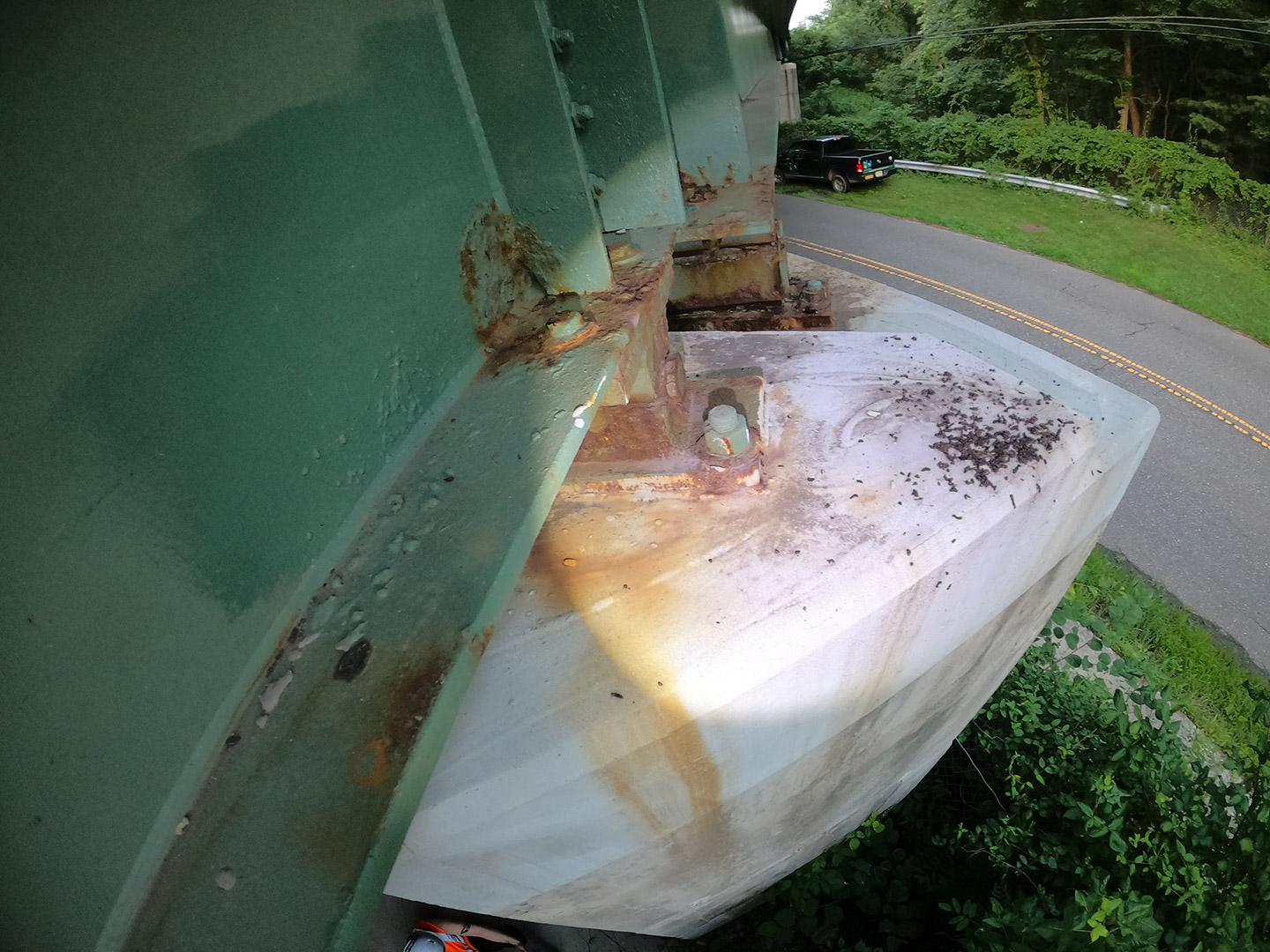Not only are bats found in caves and resting under the loose bark of trees, but they also use the nooks and crannies, joints, and gaps found in many of our roadway bridges over roads and streams. Numerous studies have shown that large numbers of bats
occupy bridges for daytime shelter and summer roosting, or maternity colonies for raising their young. Issues can arise when bridge maintenance activities need to be conducted, which may disturb, injure, or kill bats using the infrastructure.
 A bridge pier cap that has a collection of guano from bats using the bridge crack.
A bridge pier cap that has a collection of guano from bats using the bridge crack.
The Endangered and Nongame Species Conservation Act of 1973
It is estimated that within the southern U.S., 3600 highway structures are being used by approximately 33 million bats, according to a study by Bat Conservation International, Inc. All bats, including two federally listed species, Indiana bat and Northern
Long-eared bat, are protected in New Jersey under the Endangered and Nongame Species Conservation Act of 1973, making it illegal to harm, harass, capture, or kill bats, or to attempt to do so. Over 90% of Indiana bats and Northern Long-eared bat populations
(along with other hibernating bat species) have been killed by white-nose syndrome, therefore federal protection is needed.
In New Jersey, The U.S. Fish and Wildlife Service (FWS) and the New Jersey Division of Fish and Wildlife Endangered and Nongame Species Program (ENSP) have partnered to provide awareness and training to identify potential occupancy of bridges by bats.
Teamed with the New Jersey Department of Transportation (NJDOT), the two regulatory agencies are performing formal bridge bat surveys prior to the start of maintenance or construction activities scheduled to be conducted during the roosting period
from May through October.
Inspecting Every Part of a Bridge for Bats
The visual survey involves inspecting each part of a bridge from the guiderails to the expansion joints, high and low. To see into areas of the bridge not visible from the ground, a 30-foot telescoping pole rigged with a camera and flashlight is maneuvered
and angled around and under the bridge to look for bats, or evidence of bats, including urine staining on the bridge and guano on the pier tops, abutments, or on the ground under the bridge.
To further confirm evidence of bats, emergence surveys at dusk—a time when bats leave the bridge to forage in the night—can also be useful to make the determination. The study involves using a bat meter that converts the bat’s echolocation
into audible frequencies that can be heard just prior to the bat’s emergence from the bridge.
The visual survey involves inspecting each part of a bridge from the guiderails to the expansion joints, high and low. To see into areas of the bridge not visible from the ground, a 30-foot telescoping pole rigged with a camera and flashlight is maneuvered and angled around and under the bridge to look for bats, or evidence of bats, including urine staining on the bridge and guano on the pier tops, abutments, or on the ground under the bridge."
Ami Gulden and Steve Finch
 A big brown bat that was observed in the expansion joint of a bridge deck.
A big brown bat that was observed in the expansion joint of a bridge deck.
What Happens if Evidence of Bats is Found?
Survey results are submitted to both the ENSP and FWS, along with the NJDOT Bureau of Landscape Architecture and Environmental Solutions (BLAES) to discuss potential impacts based on the type of work NJDOT needs to conduct on that structure. The ENSP
and FWS may conduct further acoustic monitoring surveys to identify the number of bats and the species of bat using the structure. The bats are not moved. Maintenance/construction activities may be delayed until the bats have vacated the structure,
which could take months.
Although still in its infancy, we expect that this program will expand to involve all bridge structures in New Jersey in the future. As the needs continue to evolve, this program will provide awareness and training to identify potential occupancy of bridges
by bats and take appropriate safety and preservation measures prior to bridge maintenance.